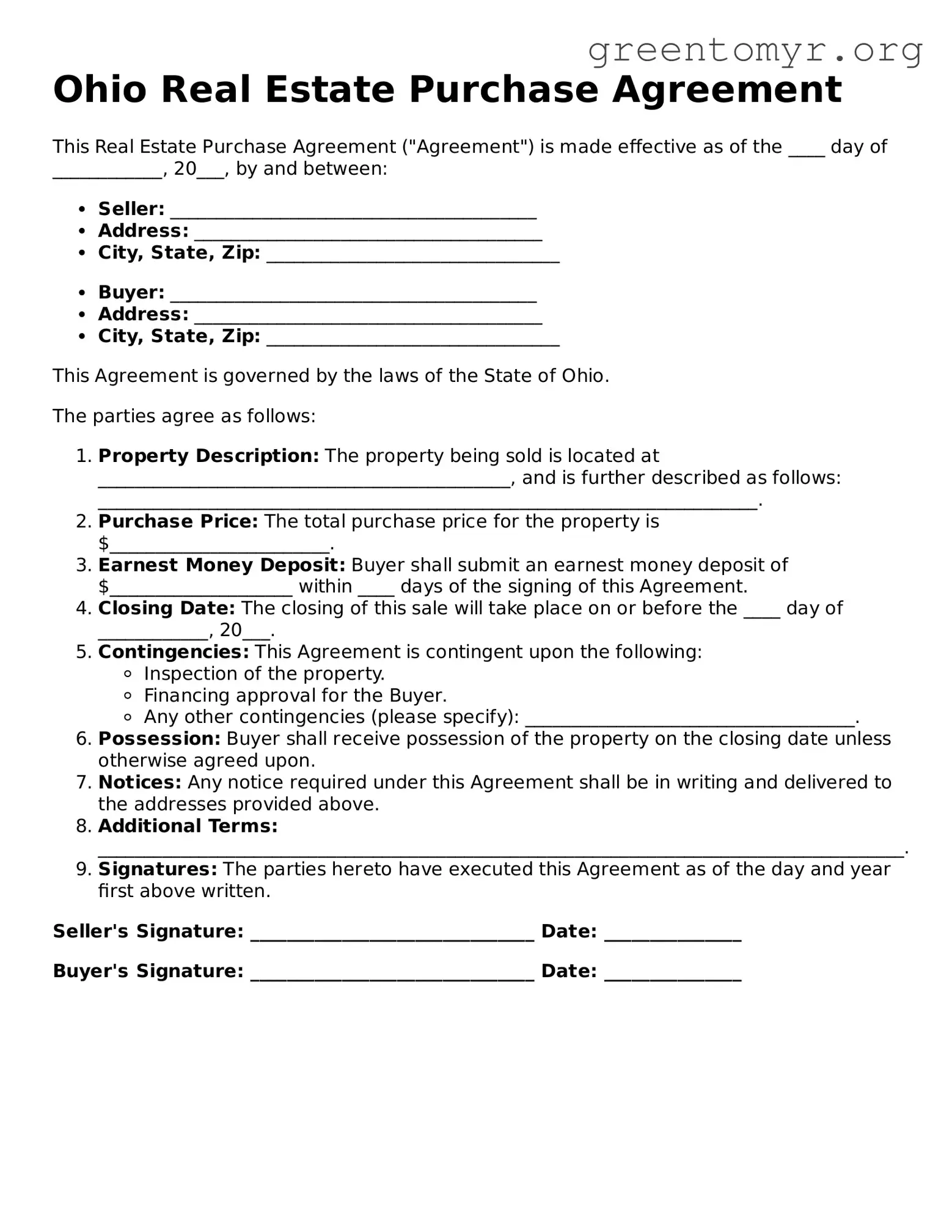Filling out the Ohio Real Estate Purchase Agreement can be a straightforward process, but many make simple mistakes that can lead to complications. Understanding these common errors can help buyers and sellers avoid pitfalls that could delay their transactions or even jeopardize their deals.
One of the most frequent mistakes is incomplete information. Parties involved often fail to fill out every section of the form. Leaving out critical details, such as the full names of buyers and sellers or the correct property address, can create confusion and may delay the closing process. Ensure that every space is completed accurately to facilitate a smooth transaction.
Another common error is incorrect pricing. Buyers sometimes specify the wrong purchase price or fail to indicate how the financing arrangements will impact the sale. It’s essential to clarify the total amount and any potential contingencies regarding loans or other financing methods to prevent misunderstandings later.
Misunderstanding contingency clauses is also a frequent issue. These clauses are vital as they allow parties to back out of a sale under certain conditions, such as a failed home inspection or the inability to secure financing. Neglecting to include these clauses or misunderstanding their implications can leave one party vulnerable.
The omission or misplacement of dates and deadlines can complicate matters. Parties must include the correct dates for the acceptance and closing of the offer. Without clear timelines, both parties may have differing expectations about when actions need to be taken, leading to disputes.
People sometimes fail to properly authorize representations made during the negotiation process. It’s important to clarify who has authority to make decisions and representations, especially when agents are involved. If expectations are not clearly communicated, it can lead to liability issues or misunderstandings about what was agreed upon.
Another mistake is not reviewing the terms fully before signing. Every party should take the time to understand what they are agreeing to. In some cases, individuals might rush through the process without comprehending the implications of specific terms, resulting in regret after the fact.
Additionally, errors with signature verification often occur. Each signature must be legible and match the name of the signer as it appears elsewhere in the agreement. Failure to ensure that this is done properly can lead to issues with enforcement later on.
Finally, neglecting to maintain copies of everything post-transaction can lead to headaches. Once the form is completed, ensure that all parties retain copies for their records. This occurs often when parties are eager to move forward, but having a record is essential for future reference.
Understanding these common mistakes can profoundly impact the success of a real estate transaction in Ohio. Taking the time to carefully fill out the Real Estate Purchase Agreement can prevent delays and ensure that all parties are on the same page, contributing to a smoother transaction experience.
